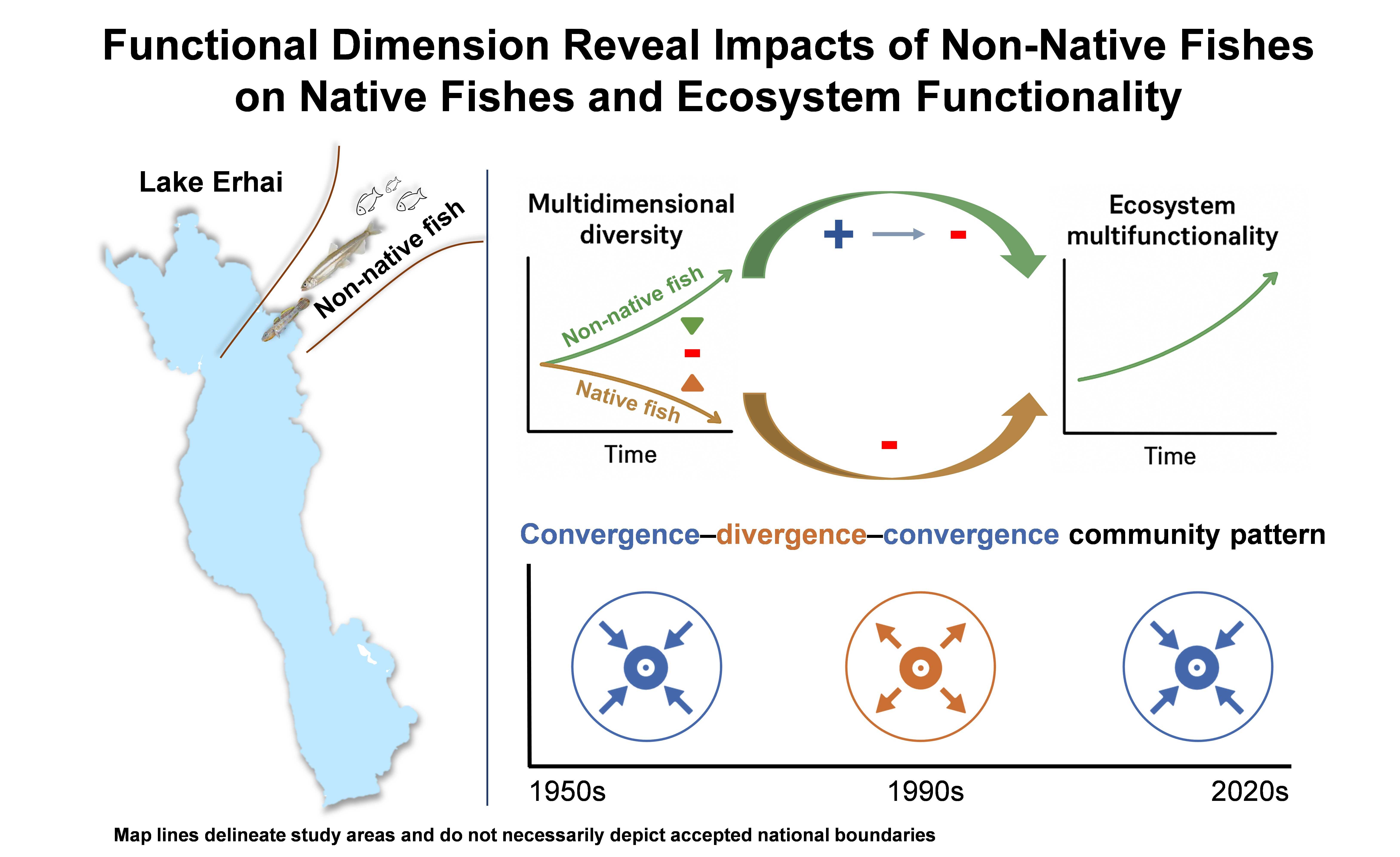
Newsroom
Functional Dimension Reveals Impacts of Non-Native Fishes on Native Fishes and Ecosystem Functionality
Anthropogenic-mediated invasions of non-native species are leading to biodiversity loss in many trophic groups, with specific impacts on a wide range of ecosystem functions and services. However, the impacts of non-native species on native species and ecosystem multifunctionality are not well understood, particularly due to the lack of long-term studies that focus on the analysis of functional and phylogenetic diversities.
To address this gap, the Fisheries Ecology Research Group at the Institute of Hydrobiology (IHB) of the Chinese Academy of Sciences has made important advances in elucidating the temporal relationships between lake fish multidimensional diversity and ecosystem multifunctionality, as well as the key roles of non-native fishes. These advances have been published in Global Change Biology.
In this study, the researchers conducted long-term analyses using Lake Erhai, a representative hotspot of non-native fish invasion, as a case study. Results showed a persistent increase in non-native fish diversity alongside a marked decline in native fish diversity, with a significant negative correlation observed between non-native and native fish.
Non-native fish functional diversity exhibited a nonlinear relationship with ecosystem multifunctionality—showing positive effects at low levels but negative effects at high levels. In contrast, native fish functional diversity, as well as environmental factors such as water level, transparency, and precipitation, were negatively correlated with multifunctionality.
Moreover, standardized effect sizes were obtained for each decade using null models to infer the mechanisms underlying community assembly. The functional space of fish assemblages, together with their functional and phylogenetic structures, exhibited a dynamic pattern of “convergence–divergence–convergence (CDC),” reflecting the profound and long-term impacts of non-native fish invasions on lake ecosystem structure and functioning.
These findings underscore the importance of integrating functional perspective in biodiversity monitoring and management to enhance our understanding of, and foster more effective strategies for addressing, the long-term impacts of non-native species on native species and ecosystem multifunctionality.

(Editor: MA Yun)